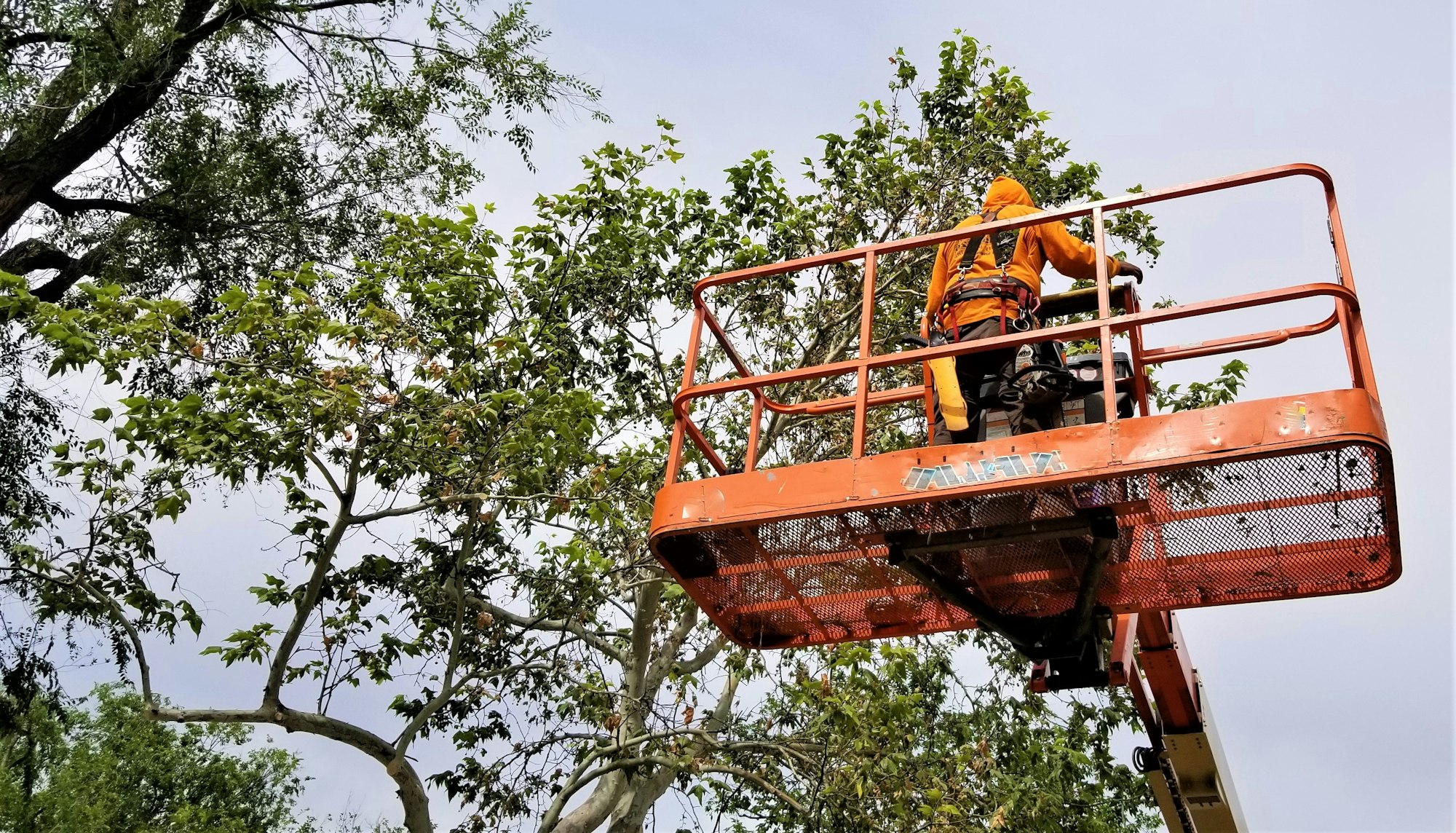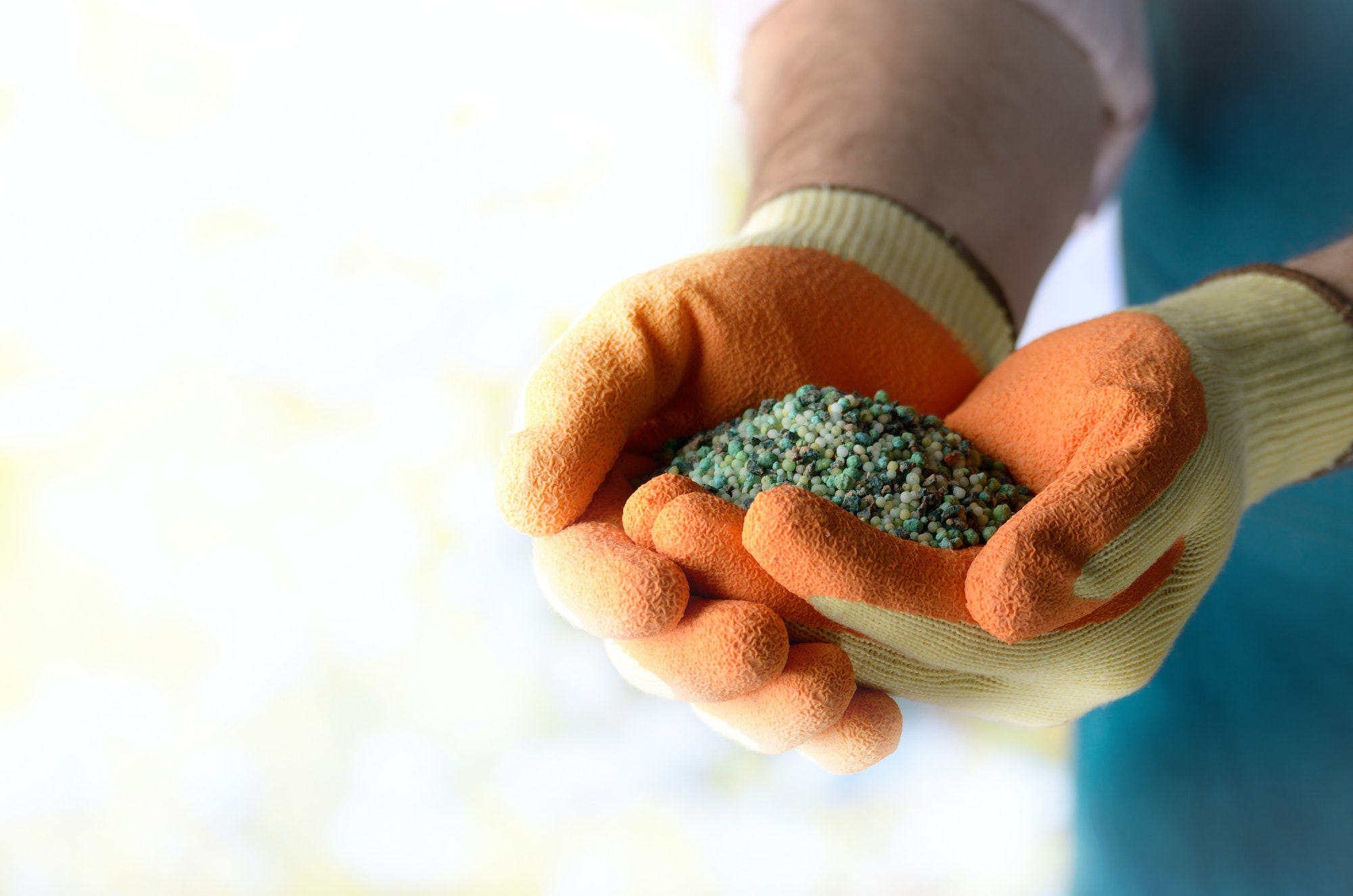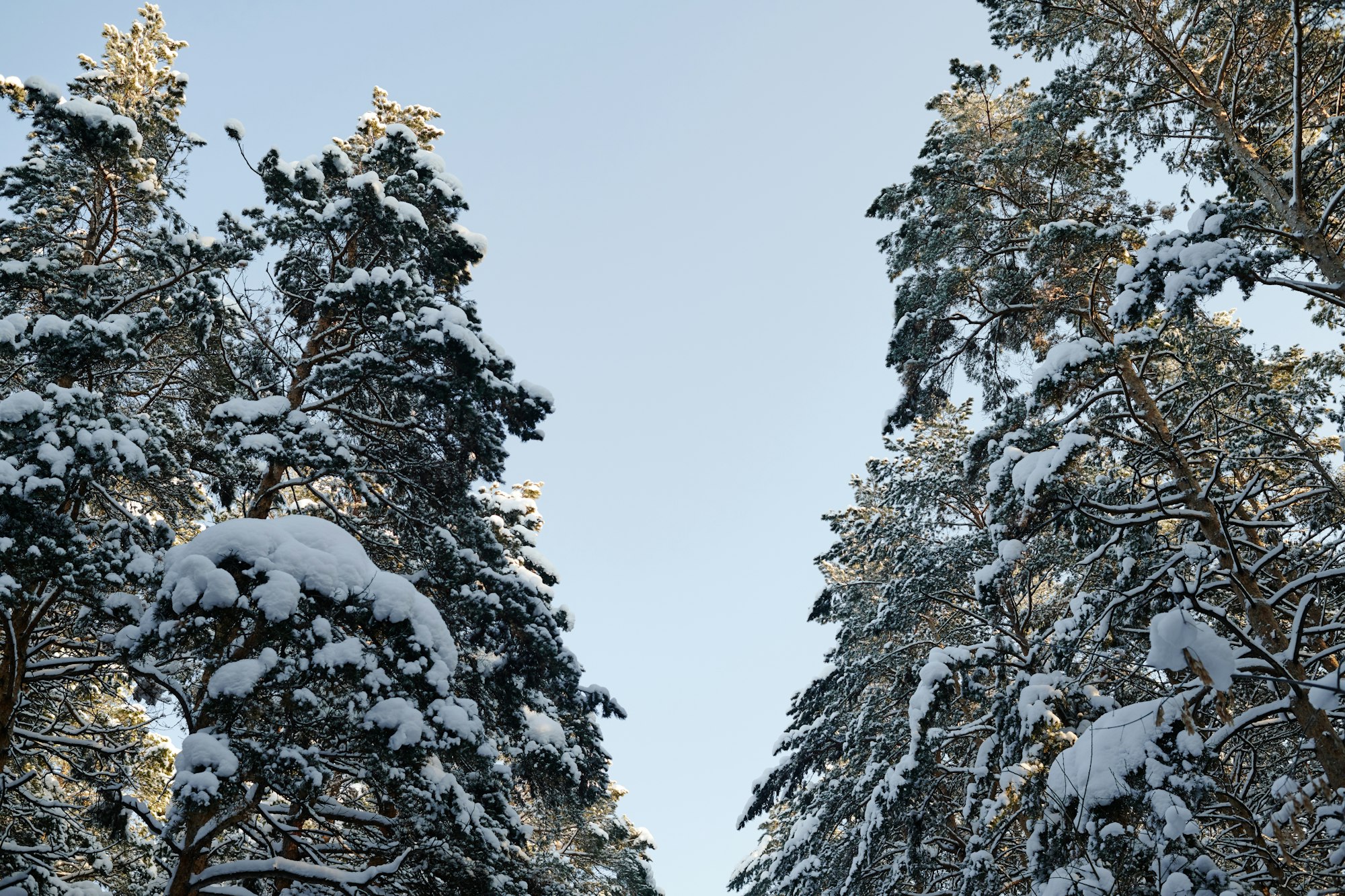Table of Contents
Elevate your garden: 5 must-know tree maintenance tips for spring
As the season transitions, the weather turns sunnier, and trees begin to bloom, it’s crucial to ensure your trees receive the care they need to thrive. It gives the perfect opportunity to step outside and prepare your garden for the upcoming spring and summer seasons. From pruning to watering and everything in between, this article provides essential advice to keep your trees healthy and vibrant throughout the next season.
Clear Debris Around the Tree Base
- Start your spring cleanup by maintaining the area around the tree’s base. Remove any twigs, leaves, or other debris that may have gathered beneath and around the tree. With the arrival of warmer temperatures, it’s time to remove any protective coverings or plastic previously used during the cold winter.
Raking up accumulated debris, such as old leaves or fallen fruit, is advisable, as this helps protect the tree from diseases or fungi that could persist.
Planting New Trees
- Trees offer numerous benefits to your property, from noise reduction to soil stabilization and providing habitat for wildlife. They also enhance property values and lower energy expenses. Spring presents an ideal opportunity to introduce trees to your property, as their roots can be established before the onset of summer heat.
Each tree species has its planting preferences, so don’t hesitate to reach out to experts for guidance on the best time to plant a new tree. If you’re curious about which trees to plant in your location to attract bees, birds, and butterflies, arborists can help you make the right choice.
Mulching and Watering Trees
- Mulching trees in spring is essential for their overall health. Applying mulch helps suppress weed growth and retain moisture in the soil. While particularly beneficial for young trees (under ten years old), older trees also benefit. When applying mulch, aim for a layer that is two to three inches thick and extends a few feet wide around the tree. However, ensure the mulch does not directly touch the trunk, as this can provide a gateway for diseases to infiltrate.
Leave a gap of one to two inches between the mulch and the trunk to prevent such issues. When watering, wait until the soil thaws to avoid runoff. Even in cooler weather, it’s important to prevent the tree from drying out completely. You may need to water the tree multiple times a day to maintain adequate moisture levels.
Fertilizing Trees
- Spring is an ideal time for tree fertilization. When soil lacks essential macronutrients and micronutrients, fertilization becomes crucial to support tree health. To determine if an established tree requires fertilization, monitor its shoot growth, which refers to the growth occurring within a single year. However, certified arborists consider various factors beyond shoot growth when determining the appropriate fertilization regimen.
In addition, it’s optimal to apply slow-release fertilizer before the tree’s spring growth surge. While the timing of fertilization may vary depending on location, soil conditions, and tree species, a general guideline is to apply fertilizer as soon as the ground becomes workable in spring.
Inspecting Trees for Damage and Disease
 In spring, thoroughly inspect your trees for damage or disease. Look out for visible indications such as broken branches, holes, molds, and fungi. Additionally, pay attention to branches that fail to produce flowers or leaves. They are likely dead and should be pruned, preferably by a professional tree pruning service.
In spring, thoroughly inspect your trees for damage or disease. Look out for visible indications such as broken branches, holes, molds, and fungi. Additionally, pay attention to branches that fail to produce flowers or leaves. They are likely dead and should be pruned, preferably by a professional tree pruning service.
During winter, trees may suffer from winter desiccation, or “winter burn,” caused by dehydration in cold conditions. Another concern is winter sunscald, characterized by vertical cracks in tree bark. Pay attention to any discoloration, as it could indicate underlying issues.
Improve your tree growth with American Tree’s tailored nutrient solutions. Contact us today at (973) 744-6091 to access personalized organic and liquid injection fertilizers perfectly suited to fulfill your plants’ nutritional needs. We provide services in Montclair, New Jersey, and nearby areas. Let’s nurture your plants together.



 Thoroughly examining your tree for signs of diseases, pests, or parasites can help you differentiate between dormancy and death. Common tree diseases, including fungal, bacterial, and viral infections, as well as various forms of blight, often show visible symptoms such as discoloration, wilting, cankers, lesions, or abnormal growth patterns.
Thoroughly examining your tree for signs of diseases, pests, or parasites can help you differentiate between dormancy and death. Common tree diseases, including fungal, bacterial, and viral infections, as well as various forms of blight, often show visible symptoms such as discoloration, wilting, cankers, lesions, or abnormal growth patterns.
 By clearly marking the work area, prioritize the safety of co-workers, pedestrians, and other individuals in the vicinity. If the tree extends over a roadway, consider using signs and cones to redirect pedestrian and vehicular traffic as needed. Additionally, wearing
By clearly marking the work area, prioritize the safety of co-workers, pedestrians, and other individuals in the vicinity. If the tree extends over a roadway, consider using signs and cones to redirect pedestrian and vehicular traffic as needed. Additionally, wearing 
 Relocate an infested plant to a separate area, ideally far from other plants.
Relocate an infested plant to a separate area, ideally far from other plants.
 It’s advisable to approach pruning with a gentle touch. Reserve heavy pruning for situations where the tree is severely infested or diseased. Each pruning cut weakens the tree’s immune system slightly, making it more susceptible to pests and fungal infections.
It’s advisable to approach pruning with a gentle touch. Reserve heavy pruning for situations where the tree is severely infested or diseased. Each pruning cut weakens the tree’s immune system slightly, making it more susceptible to pests and fungal infections.
 Removing a tree, even of moderate size, is a time-consuming task. Each branch must be carefully removed to avoid damage to the home, neighboring properties, or nearby trees. Furthermore, the stump must be excavated from the ground, adding to the complexity of the process. Executing these steps demands both time and specialized equipment.
Removing a tree, even of moderate size, is a time-consuming task. Each branch must be carefully removed to avoid damage to the home, neighboring properties, or nearby trees. Furthermore, the stump must be excavated from the ground, adding to the complexity of the process. Executing these steps demands both time and specialized equipment.
 Organic fertilizers can be applied more generously to your plants. When using store-bought products, it’s crucial to follow the instructions provided. If you’re using homemade fertilizer, exercise caution, particularly when using manure. Allow the manure to age for four months to a year before applying it to your plants. Aged manure can be introduced into holes for planting shrubs or trees, scattered around mature plantings, or placed next to cultivated vegetables throughout the year.
Organic fertilizers can be applied more generously to your plants. When using store-bought products, it’s crucial to follow the instructions provided. If you’re using homemade fertilizer, exercise caution, particularly when using manure. Allow the manure to age for four months to a year before applying it to your plants. Aged manure can be introduced into holes for planting shrubs or trees, scattered around mature plantings, or placed next to cultivated vegetables throughout the year.
 Trees that bear heavy fruit loads can strain their branches and increase the risk of breakage. Cabling provides additional support to heavy branches to distribute the weight of the fruit load evenly, preventing damage and promoting healthy growth.
Trees that bear heavy fruit loads can strain their branches and increase the risk of breakage. Cabling provides additional support to heavy branches to distribute the weight of the fruit load evenly, preventing damage and promoting healthy growth.
 Trees that are in the process of dying or under stress are a host to pests, including carpenter ants and beetles. Dead or dying branches are the preferred habitat for insects and pests. The depressed or discolored areas usually indicate
Trees that are in the process of dying or under stress are a host to pests, including carpenter ants and beetles. Dead or dying branches are the preferred habitat for insects and pests. The depressed or discolored areas usually indicate 
